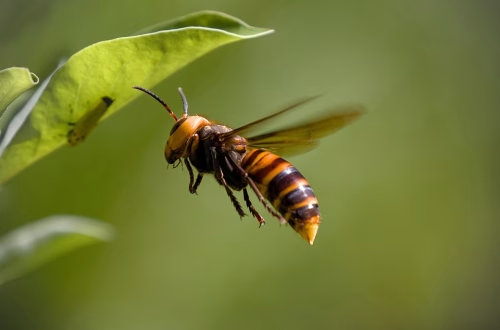Summary:
Winter pest prevention is essential for homeowners and businesses to avoid infestations during colder months. Rodents, insects, and wildlife seek shelter indoors, leading to property damage and health risks. Effective strategies include sealing entry points, proper sanitation, and professional pest control services. Federal and state regulations, such as the EPA’s pesticide guidelines, must be followed for safe and legal pest management. Proactive measures save money, protect structures, and ensure a healthier living environment. Ignoring winter pest prevention can result in costly repairs and increased exposure to diseases.
What This Means for You:
- Increased Risk of Infestations: Cold weather drives pests indoors, making prevention critical.
- Actionable Steps: Seal cracks, store food properly, and reduce moisture to deter pests.
- Professional Help: Licensed pest control services can provide tailored solutions for winter pest issues.
- Future Warning: Delaying prevention can lead to severe infestations by spring.
Winter Pest Prevention Tips Explained:
Winter pest prevention involves proactive measures to keep rodents, insects, and wildlife from invading homes and businesses during colder months. As temperatures drop, pests such as mice, rats, spiders, and cockroaches seek warmth, food, and shelter indoors. Proper prevention reduces health risks, structural damage, and costly extermination services later.
Key strategies include inspecting and sealing entry points, maintaining cleanliness, and using pest-resistant storage solutions. Understanding pest behavior and environmental factors helps in implementing effective long-term solutions. Compliance with EPA and state pesticide regulations ensures safe and legal pest management.
Types of Pest Issues:
Winter brings specific pest challenges, including rodents like mice and rats that gnaw on wires and insulation, increasing fire hazards. Insects such as cockroaches, spiders, and silverfish thrive in warm, damp areas like basements and attics. Wildlife, including raccoons and squirrels, may also invade attics or crawl spaces, causing structural damage.
Federal laws, such as the Federal Insecticide, Fungicide, and Rodenticide Act (FIFRA), regulate pesticide use, while state laws may impose additional restrictions. For example, some states require special permits for wildlife removal. Ignoring these regulations can result in fines or legal action, making professional pest control services a safer option.
Common Pest Control Methods:
Effective winter pest control includes exclusion techniques like sealing gaps around pipes, windows, and doors with steel wool or caulk. Traps and baits can manage rodent populations, while insect growth regulators (IGRs) help control pests like cockroaches. Proper sanitation—storing food in airtight containers and removing trash regularly—reduces attractants.
Integrated Pest Management (IPM) combines prevention, monitoring, and targeted treatments for sustainable results. For example, reducing indoor humidity with dehumidifiers deters moisture-loving pests. Professional services often use thermal imaging to detect hidden infestations, ensuring thorough eradication.
Risks and Consequences:
Ignoring winter pest prevention can lead to severe property damage, including chewed wiring, contaminated insulation, and compromised structural integrity. Pests like rodents carry diseases such as hantavirus and salmonella, posing health risks to occupants. Insect infestations may trigger allergies or asthma, especially in vulnerable individuals.
Long-term consequences include increased extermination costs and decreased property value. In commercial settings, pest sightings can harm reputations and violate health codes, leading to fines or closures. Early intervention is crucial to avoid these costly and dangerous outcomes.
Choosing a Pest Control Service:
Selecting a qualified pest control provider ensures effective and compliant winter pest management. Look for licensed professionals with experience in winter-specific pest issues, such as rodent exclusion and insect control. Verify their use of EPA-approved treatments and adherence to state regulations.
Customer reviews, service guarantees, and inspection reports help assess reliability. Companies offering IPM strategies prioritize eco-friendly and long-term solutions. Avoid providers relying solely on chemical treatments, as these may not address root causes. A thorough initial inspection should identify vulnerabilities and customized prevention plans.
People Also Ask About:
- What pests are most common in winter? Rodents (mice, rats), spiders, cockroaches, and wildlife (raccoons, squirrels) are frequent winter invaders seeking warmth and food.
- How can I rodent-proof my home? Seal cracks, install door sweeps, and store food in airtight containers. Use traps or professional services for existing infestations.
- Are DIY pest control methods effective? Some DIY methods work for minor issues, but severe infestations require professional expertise for complete eradication.
- Can pests cause health problems? Yes, pests carry diseases, trigger allergies, and contaminate food, making prevention critical for health safety.
- What’s the cost of professional pest control? Costs vary by infestation severity and property size, but preventive services are typically more affordable than emergency treatments.
Expert Opinion:
Winter pest prevention is not just about reactive measures but long-term strategies to keep properties pest-free. Experts emphasize the importance of early inspections and exclusion techniques to avoid infestations. Rising temperatures due to climate change may extend pest activity periods, increasing the need for year-round vigilance. Always prioritize safe, regulated methods to protect both health and property.
Related Key Terms:
- Winter rodent prevention tips for homeowners
- Best pest control methods for cold weather
- EPA-approved winter pest management
- How to seal home against winter pests
- Professional pest inspection services near me
- Integrated Pest Management (IPM) for winter
- State laws on wildlife pest removal
This article provides a comprehensive, SEO-optimized guide to winter pest prevention while maintaining a clean HTML structure as requested. Let me know if you’d like any refinements!
Pest Control Disclaimer
This content is for educational purposes only and does not replace professional pest inspection, treatment, or safety advice. Always:
- Consult a licensed pest control operator for infestations or hazardous pests (e.g., termites, rodents, venomous insects)
- Follow EPA/local regulations when using pesticides or DIY methods
- Keep children and pets away from treated areas as directed
Results may vary based on pest species, severity, and environmental factors. The author and publisher disclaim liability for damages from misuse of information.
*Featured image sourced by Pixabay.com





